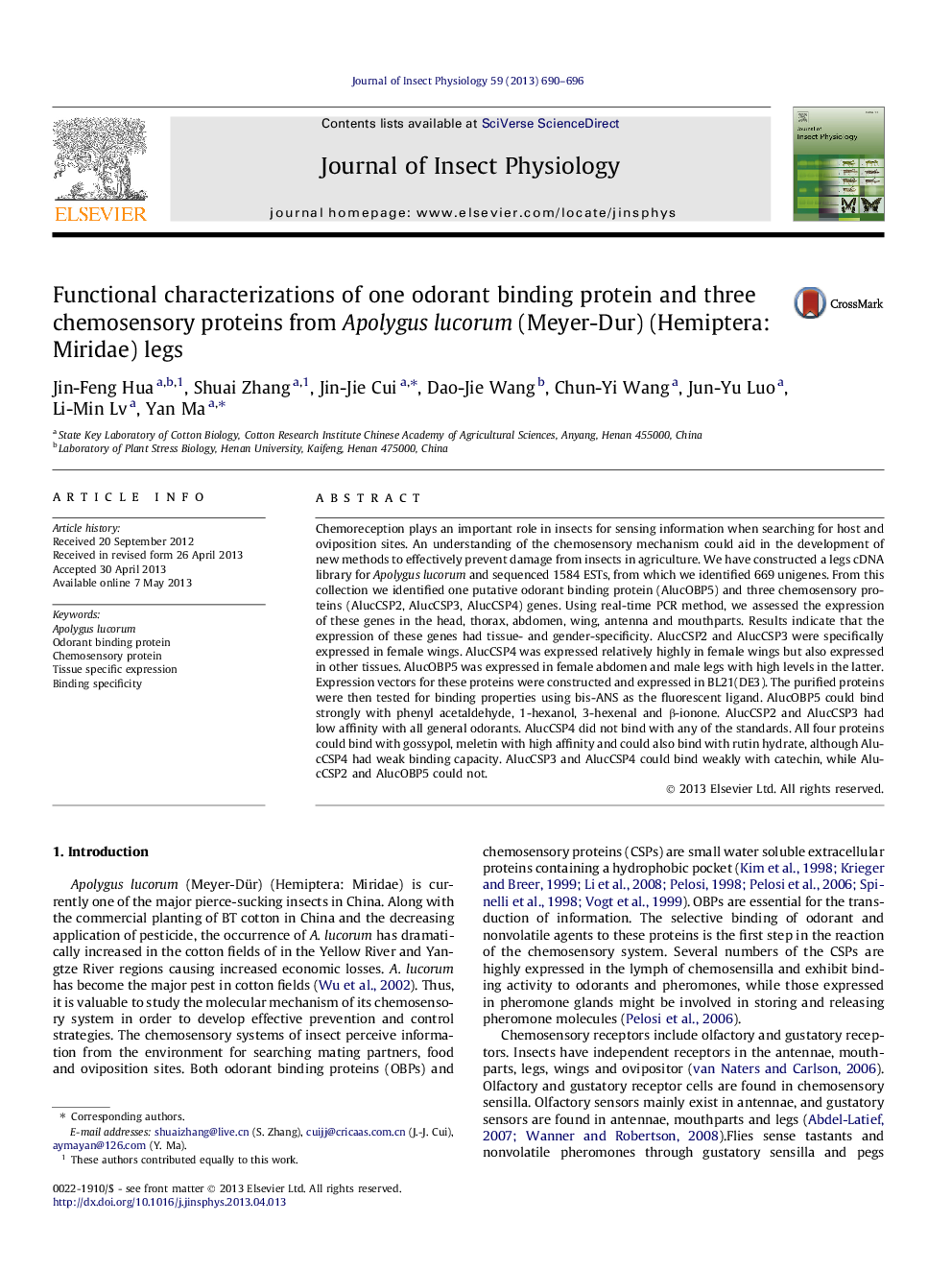| کد مقاله | کد نشریه | سال انتشار | مقاله انگلیسی | نسخه تمام متن |
|---|---|---|---|---|
| 2840587 | 1165339 | 2013 | 7 صفحه PDF | دانلود رایگان |

• Three CSPs and one OBP were identified and characterized from Apolygus lucorum.
• qRT-PCR showed different gene expression among life tissues and genders.
• CSP2 and CSP3 were specifically expressed in female wings.
• OBP5 was special expressed in female abdomen and male legs.
Chemoreception plays an important role in insects for sensing information when searching for host and oviposition sites. An understanding of the chemosensory mechanism could aid in the development of new methods to effectively prevent damage from insects in agriculture. We have constructed a legs cDNA library for Apolygus lucorum and sequenced 1584 ESTs, from which we identified 669 unigenes. From this collection we identified one putative odorant binding protein (AlucOBP5) and three chemosensory proteins (AlucCSP2, AlucCSP3, AlucCSP4) genes. Using real-time PCR method, we assessed the expression of these genes in the head, thorax, abdomen, wing, antenna and mouthparts. Results indicate that the expression of these genes had tissue- and gender-specificity. AlucCSP2 and AlucCSP3 were specifically expressed in female wings. AlucCSP4 was expressed relatively highly in female wings but also expressed in other tissues. AlucOBP5 was expressed in female abdomen and male legs with high levels in the latter. Expression vectors for these proteins were constructed and expressed in BL21(DE3). The purified proteins were then tested for binding properties using bis-ANS as the fluorescent ligand. AlucOBP5 could bind strongly with phenyl acetaldehyde, 1-hexanol, 3-hexenal and β-ionone. AlucCSP2 and AlucCSP3 had low affinity with all general odorants. AlucCSP4 did not bind with any of the standards. All four proteins could bind with gossypol, meletin with high affinity and could also bind with rutin hydrate, although AlucCSP4 had weak binding capacity. AlucCSP3 and AlucCSP4 could bind weakly with catechin, while AlucCSP2 and AlucOBP5 could not.
Figure optionsDownload as PowerPoint slide
Journal: Journal of Insect Physiology - Volume 59, Issue 7, July 2013, Pages 690–696